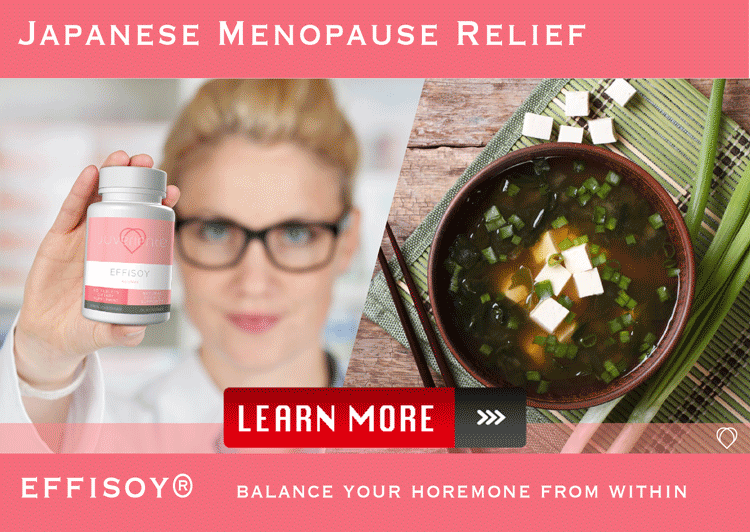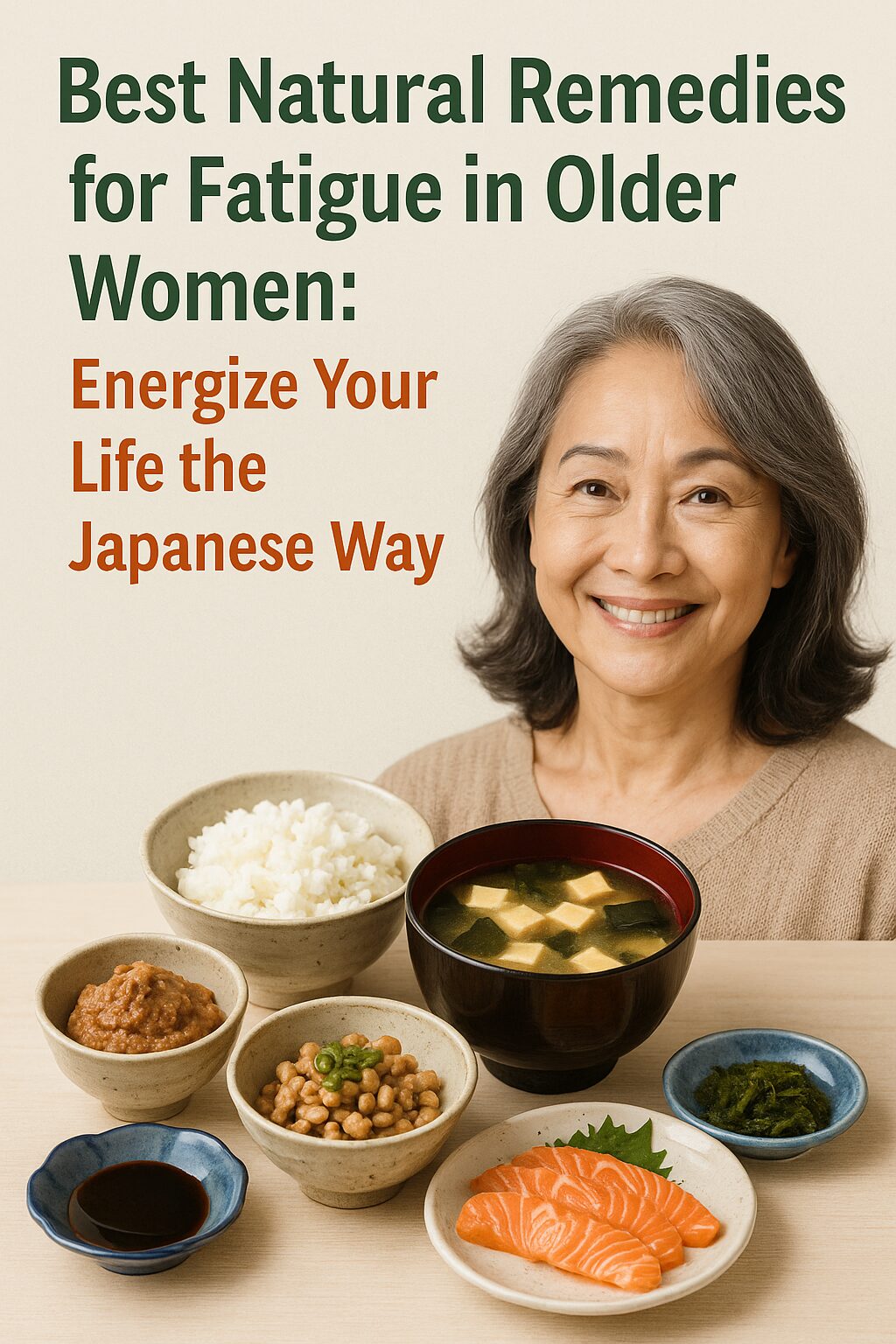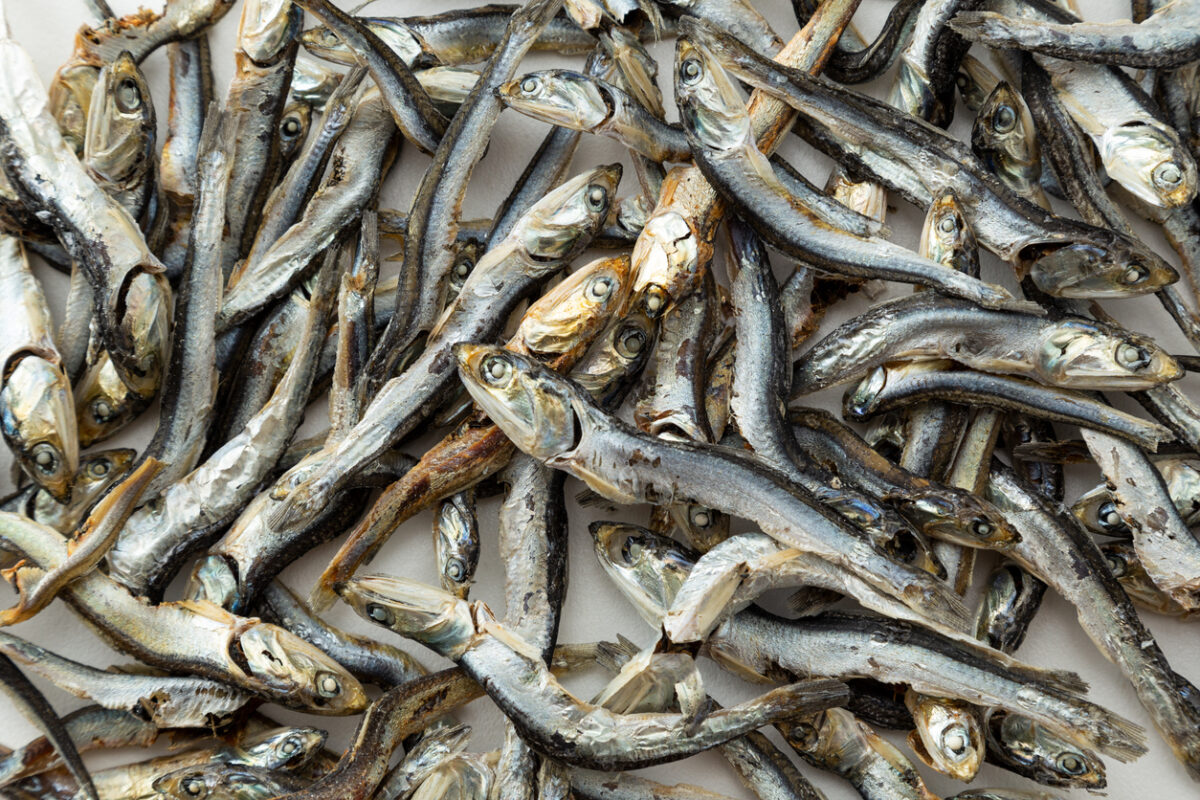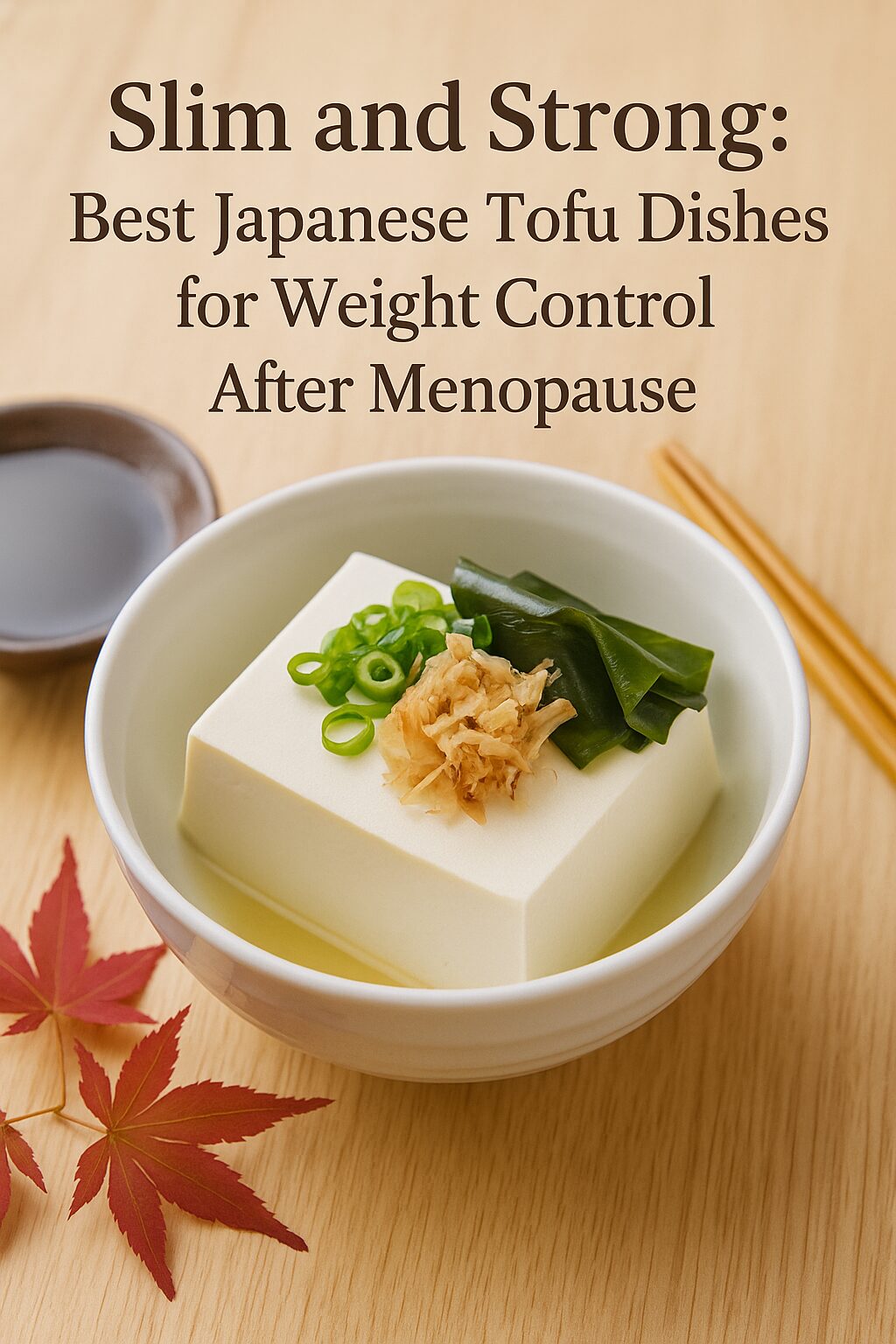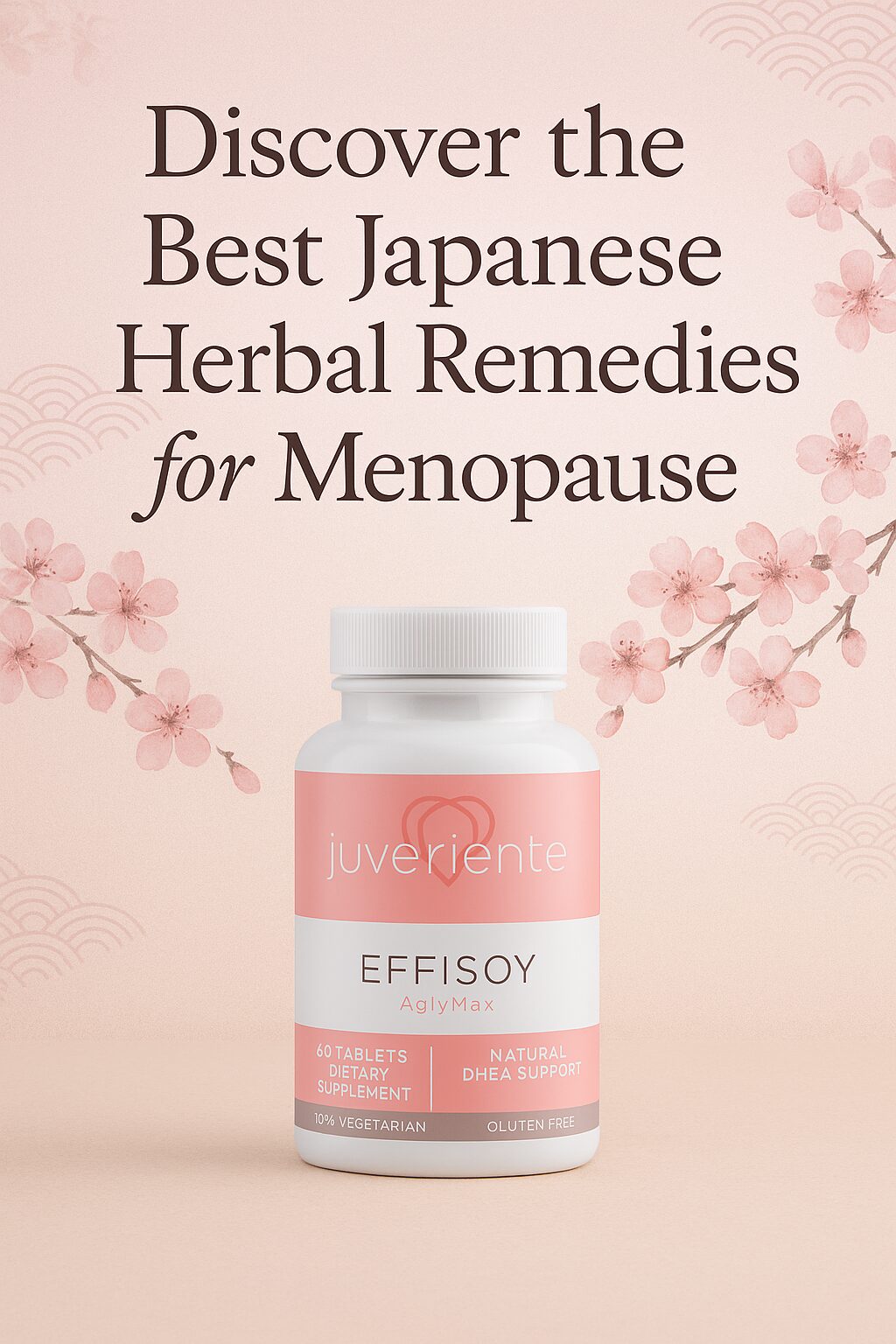— Easy Ways to Eat Smarter Without Changing Your Whole Diet
Eating healthy after 50 doesn’t mean giving up the foods you love. By adding a few simple ideas from Japanese home cooking, you can support your health without overhauling your meals. These small changes focus on portion control, flavor, fiber, and smarter cooking methods—perfect for women in midlife and beyond.
Why Japanese Eating Habits Are Great for Women Over 50
The traditional Japanese diet is light, balanced, and rich in nutrients. It emphasizes vegetables, fish, fermented foods, and a variety of cooking techniques that preserve flavor without adding unnecessary fat or sugar. These habits help reduce inflammation, support digestion, and maintain healthy bones and hormones—areas many women over 50 care about.
According to Harvard Health Publishing, Japanese eating patterns may contribute to lower risks of heart disease, diabetes, and obesity.
Portion Control the Japanese Way: Small Plates, Big Impact
Make each dish smaller but more varied
Japanese meals often consist of several small dishes instead of one big main. You might have a small bowl of rice, a bit of fish, a side of vegetables, and a small soup. This creates a sense of abundance without overeating.
Use small plates and bowls
Switching from large Western-style dinner plates to small bowls can help you eat less while feeling satisfied. It also encourages mindful eating.
Enjoy variety, not volume
Different textures and colors stimulate your senses and reduce the urge to snack later. Even if you’re using the same ingredients, serving them in multiple ways can make a difference.
From Stir-Frying to Steaming: A Lighter Way to Cook
Cut back on oil with steaming
Instead of stir-frying every dish in oil, try steaming vegetables and proteins like fish or chicken. Add flavor afterward with seasonings or light sauces.
Keep nutrients intact
Steaming preserves nutrients like vitamin C and folate, which are often lost during frying. For example, steamed broccoli retains more health benefits than stir-fried.
Pair steamed dishes with strong flavors
Use sauces made with ginger, miso, or citrus (like ponzu) to make steamed foods exciting without needing butter or heavy dressings.
Add Flavor Without Fat: The Magic of Dashi and Potato Starch
Use dashi for rich, low-calorie flavor
Dashi, a traditional Japanese broth made from kombu (kelp) and bonito flakes, adds deep umami to soups, simmered dishes, and even salad dressings. It’s a great way to replace cream or oil-based sauces.
Learn more about dashi and how to make it at Just One Cookbook.
Thicken without butter or cream
Instead of using heavy cream, try potato starch (katakuriko) to thicken sauces. A small amount creates a smooth texture with almost no fat.
Make your own healthy sauces
Mix dashi, a splash of soy sauce, and a little starch for a quick glaze over vegetables or tofu. It’s savory and satisfying without being heavy.
Boost Fiber Naturally with Japanese Ingredients
Add more fiber-rich sides
Japanese cooking often includes fiber-dense sides like simmered burdock root (gobo), hijiki seaweed, or kinpira-style stir-fries made with carrots and lotus root. These support digestion and help manage blood sugar.
Choose brown rice or mixed grains
Swap white rice for brown rice or a blend with barley (mugi gohan) for extra fiber and nutrients. It keeps you full longer and stabilizes energy levels.
Include fermented veggies
Fermented foods like pickled daikon (takuan) or napa cabbage (hakusai) kimchi not only add flavor but also aid digestion and gut health.
Final Thoughts
You don’t have to change your entire diet to enjoy better health. By borrowing a few easy ideas from Japanese home cooking—like smaller portions, steamed dishes, and fiber-rich sides—you can eat smarter and feel better, one meal at a time.
Would you like me to help format this for your blog platform (e.g., WordPress or Shopify), or create social media blurbs to promote it?
Juveriente Effisoy: A Natural Solution for Hormonal Balance and Energy Restoration
Juveriente®’s Effisoy® offers a natural solution to combat age-related fatigue by supporting hormonal balance. Launched in 2016, Effisoy® is based on fermented soybean germ extract, a traditional Japanese ingredient known for its potential to ease menopause symptoms and improve overall vitality.
Effisoy® works by boosting the body’s natural synthesis of DHEA, a hormone precursor crucial for maintaining balanced hormone levels. As we age, the body’s ability to produce DHEA declines, contributing to symptoms of fatigue and decreased energy. Effisoy® helps restore this balance by enhancing the body’s own hormone production processes. It supports hormonal balance safely, without introducing external hormones, allowing your body to regulate its hormone composition naturally.
This balance not only aids in reducing age-related fatigue but also promotes healthier skin and overall well-being. While Effisoy® benefits both men and women, it has become especially popular among women experiencing menopause, helping to alleviate symptoms like fatigue, mood swings, and skin aging.
By addressing the hormonal changes associated with aging, Juveriente®’s Effisoy® provides a natural and effective way to restore energy levels and combat age-related fatigue, helping you feel more vibrant and energized as you age.
Here are some of the real product reviews in our Amazon shop.
“Restful sleep finally!!”, “I Am Now Free of Hot Flashes!!”, “Lifesaver”
